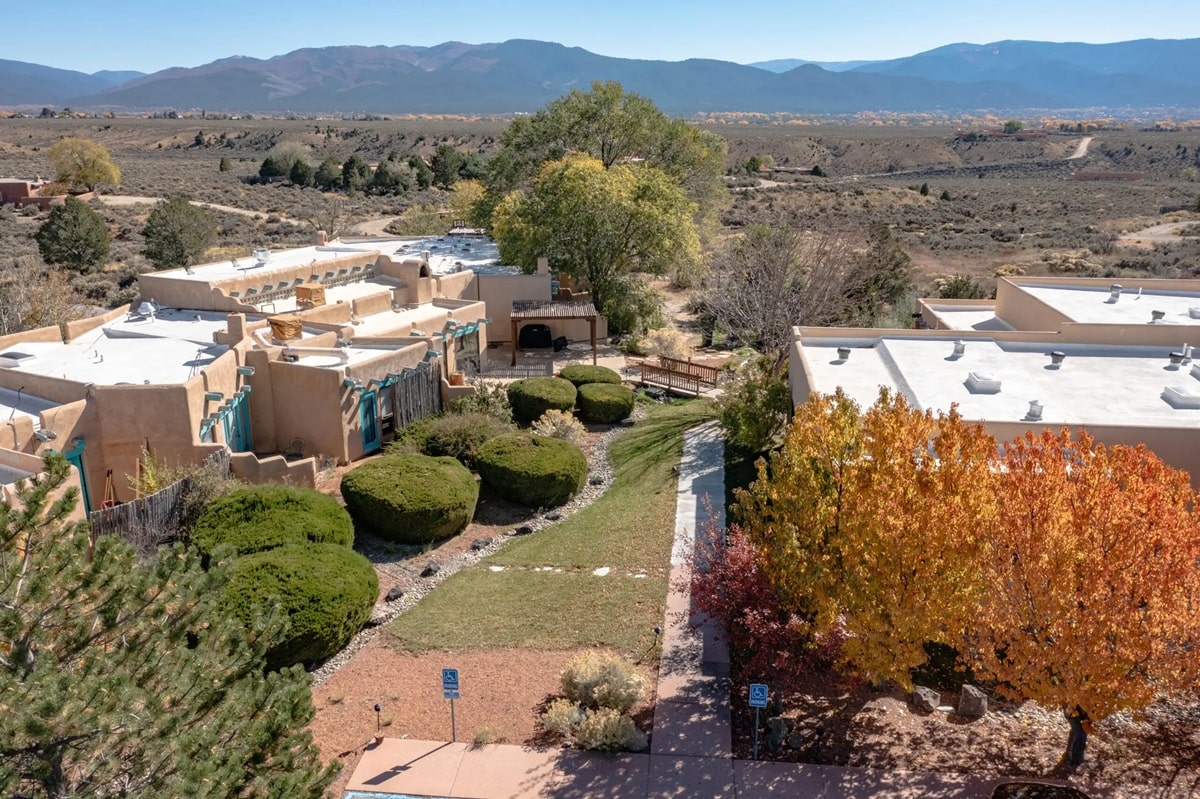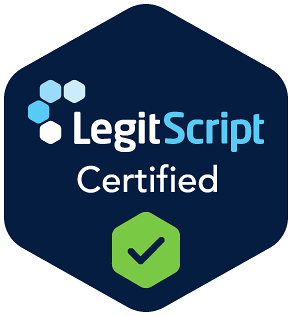Vista Taos Cocaine Addiction Rehab: Overcome Cocaine Addiction for a Brighter Future
Learn more about the benefits of cocaine addiction rehab and discover how Vista Taos can help you overcome addiction.
The Role of Cocaine Addiction Rehab
Cocaine addiction rehab plays a critical role in helping people overcome their addictions and reclaim their lives. Cocaine addiction rehab includes several ways to do this.
Below are some of the key ways these programs can help:

Detoxification
Detox is often the first step in treatment. This is where the body’s given the opportunity to rid itself of the substances. This is a critical step in overcoming addiction.
Detox can help people manage withdrawal symptoms with professional help.
Medical Supervision and Medication
Cocaine addiction rehab programs provide medical supervision to handle withdrawal symptoms. Medications can be used to manage cravings and reduce the likelihood of relapse.
Some people might also have coexisting mental health disorders. Rehab programs can help address these concerns.1
Counseling and Therapy
Individual and group therapy sessions can help people:
- Understand the root causes of their addiction
- Develop new coping strategies
- Learn how to deal with triggers in a healthy way
An example of a therapy approach is cognitive behavioral therapy (CBT). CBT is often used to help change patterns of thinking and behavior that lead to drug use.2
Support Systems
Cocaine addiction rehab centers provide a supportive environment for recovery. This often includes peer support groups where people can:
- Share experiences
- Encourage each other
- Learn from one another
Life Skills Training
Many rehabs also offer training in life skills, such as:
- Stress management
- Time management
- Financial planning
- Healthy living practices
These skills can help people build a stable life after rehab.
Aftercare Planning
The cocaine addiction rehab process doesn’t end when the program does. The staff helps individuals plan for aftercare.
This might include:
- Ongoing therapy
- Support group meetings
- Medical appointments
Relapse Prevention
Cocaine addiction rehab centers equip people with strategies to prevent relapse. This involves:
- Recognizing triggers
- Understanding how to deal with cravings
- Taking steps to maintain a drug-free lifestyle
By providing a comprehensive approach to recovery, cocaine addiction rehab plays a vital role in supporting people on their journey to sobriety.
Each person’s journey will be unique. Let cocaine addiction rehab with Vista Taos help you with your journey.
What to Consider When Selecting a Cocaine Addiction Rehab Center
Selecting the right rehab facility is an important part of the recovery process. You want to find the right program for you.
Below are some key features to consider when selecting a cocaine addiction rehab facility:
Accreditation and Licensing
Ensure the facility is accredited by a reputable healthcare accreditation organization.
Treatment Approach
Investigate the treatment methods and philosophies of the center. Choose a facility that aligns with your beliefs and feels like the best fit for your needs.
Specialized Programs
Look for facilities that offer specialized programs for cocaine addiction.
Dual Diagnosis Capability
If you experience mental health issues, it’s crucial to find a facility that offers dual diagnosis treatment.
Customized Treatment Plans
Each person’s journey to recovery is unique. It’s important to find a rehab center that offers personalized treatment plans that take into account:
- Your personal history
- The severity of your addiction
- Any underlying mental health conditions
- Your specific recovery goals
Aftercare Services
Look for programs that offer aftercare services like:
- Ongoing counseling
- Support groups
- Help with housing or job placement
Family Involvement
Family support can play a significant role in recovery. Some facilities offer family therapy sessions and involve family members in the recovery process.
Cost and Insurance
The cost of rehab can be a significant factor. Find out what your insurance will cover and what you’ll be expected to pay out-of-pocket.
Location
Depending on your situation, you may prefer a facility close to home. Or, you might find it beneficial to choose a facility farther away.
This helps to distance yourself from environments that contribute to your drug use.
Facility Amenities
Consider the environment of the facility itself. Look at aspects like:
- Cleanliness
- Recreational activities
- Privacy options
- The quality of food
All these aspects can affect your comfort and experience.
Success Rates and Reviews
Research the facility’s success rates. Read reviews from past patients. This can still provide insight into the potential effectiveness of the program.
Important Note About Recovery
Remember that recovery is a long-term commitment. The rehab facility is one part of the journey.
It’s important to select a facility that will provide the tools and support you need to achieve and maintain sobriety.
Treatment Options for Cocaine Addiction
There are several different types of rehab programs available for cocaine addiction. They differ in the level of intensity and type of setting.
Below are the different treatment options:
Inpatient (Residential) Rehab
In this type of program, people live at the rehab facility full-time. They have access to medical care and therapeutic support 24/7.3
These programs are intensive and can be helpful for those with severe addictions or coexisting mental health issues. They often involve a mix of:
- Individual therapy
- Group therapy
- Family therapy
- Case management
- Activities designed to promote recovery
Outpatient Rehab
Outpatient programs allow patients to live at home and attend treatment sessions at the facility on their own time.
This type of program can be a good fit for:
- Those with milder forms of addiction
- Those who cannot take time away from their everyday lives
- As a step-down from inpatient rehab
The focus is still on therapy, education, and building recovery skills.
Partial Hospitalization Programs (PHP)
A PHP is a type of outpatient program, but it’s more intensive. They are sometimes referred to as day treatment.
People often attend treatment 5-7 days a week for several hours each day, but they return home at night.4
Intensive Outpatient Programs (IOP)
An IOP is less intensive than a PHP. But, they are more intensive than standard outpatient therapy. IOP often involves attending treatment sessions 1 to 3 days a week for a few hours each day.
They can be beneficial for those who need a significant level of support but still need to attend to daily responsibilities like work or school.
Sober Living Homes
These are also known as halfway houses. They are residential homes where people in recovery live together and support each other.5
They can be a good option for people who need a supportive environment as they transition back into daily life.
12-Step Programs and Support Groups
These are peer-led support groups that follow a set of recovery principles. The most famous are Alcoholics Anonymous (AA) and Narcotics Anonymous (NA).
These programs can serve as a complement to other forms of treatment or as a form of aftercare. They provide a community of individuals who understand the challenges of addiction and can provide support.
Individual Therapy
For some people, working one-on-one with a therapist can be a beneficial component of recovery.
Therapies like cognitive behavioral therapy (CBT) are effective for treating substance use disorders. Each type of program has its own benefits and drawbacks.
What works best will depend on your specific:
- Needs
- Lifestyle
- Severity
- Duration of addiction
- Recovery goals
How Do Cocaine Addiction Rehab Programs Address The Challenges of Cocaine Use?
Cocaine addiction poses unique challenges. This is due to its powerful stimulating effects and the severity of withdrawal symptoms.
These withdrawal symptoms can include:
- Depression
- Suicidal thoughts
- Fatigue
- Increased hunger
- Unpleasant dreams
- Slowed thinking
- Restlessness
Cocaine addiction rehab programs address these challenges in several ways.
Detox and Medical Supervision
Medical detox aims to address withdrawal symptoms.
Medication
Medications can be used to manage withdrawal symptoms and co-occurring mental health disorders. For example, antidepressants can help manage depression.
Therapy and Counseling
Therapy and counseling can help people understand their addiction and develop coping strategies.
Holistic Approaches
Many rehab programs offer holistic therapies to help reduce cravings and promote well-being.
This might include:
- Yoga
- Meditation
- Nutrition therapy
Other Methods for Addressing Cocaine Addiction Challenges
Other ways cocaine addiction rehab addresses the challenges of addiction include:
- Treatment for co-occurring mental health disorders
- Focus on relapse prevention
- Support groups and group therapy sessions to build a support network
- Providing aftercare resources to maintain sobriety
Overcoming cocaine addiction often needs long-term treatment and a lifelong commitment to sobriety. It’s a challenging journey. But, with the right support and resources, recovery is possible.
Therapeutic Approaches for Cocaine Addiction
There are several therapy approaches that are effective in treating cocaine addiction. These will be detailed below.
Cognitive-Behavioral Therapy (CBT)
CBT is often used in cocaine addiction treatment. It helps people recognize and change patterns of thought that lead to harmful behaviors.
CBT can also equip individuals with coping skills to handle stress or triggers.
Contingency Management (CM)
This approach is based on the principle of reward for positive behavior. It involves providing tangible rewards to those who prove abstinence.
Abstinence is often confirmed using drug-free urine tests. Studies have shown that CM can be effective in treating cocaine addiction.6
Motivational Interviewing (MI)
The Matrix Model
- CBT
- Family therapy
- MI
- CM
The model also involves relapse prevention training and self-help participation.
Family Therapy
Addiction doesn’t only affect the person experiencing substance use disorder. It can also have a profound impact on the family.
Family therapy can help:
- Repair relationships
- Improve communication
- Develop strategies for supporting the individual in recovery
The effectiveness of different therapies can vary from person to person. What works best for one person may not work as well for another.
What Factors Influence the Length of Cocaine Addiction Rehab?
The duration of cocaine addiction rehab can vary. It depends on the type of program and your specific needs. But, longer treatment programs are often associated with better outcomes.9
Below are some factors that influence cocaine addiction rehab duration:
Attending Inpatient Rehab
These programs often last from 28 days to 90 days or longer.
The Severity of the Addiction
More severe addictions often need longer treatment. This might involve longer stays in residential treatment or more intensive outpatient treatment.
Whether You Have a Dual Diagnosis
Co-occurring mental health disorders can lead to longer treatment. This can help to address both the addiction and the mental health condition.
Treatment Progress and Commitment to Recovery
Your progress in treatment can also affect the length of the program.
Your commitment to recovery and motivation to change can influence the length and intensity of treatment. Those who are highly motivated may be able to succeed with less intensive treatment.
Practical Considerations
Practical considerations can also affect the length and type of treatment. These include:
- Cost
- Insurance coverage
- Personal responsibilities
Every person’s journey with addiction is unique. What works best will differ from person to person. Vista Taos can help find the cocaine addiction rehab program that fits your needs.

Aftercare, Relapse Prevention Support
Aftercare and relapse prevention programs are integral parts of cocaine addiction rehab. They play a critical role in maintaining long-term sobriety. Cocaine addiction has high relapse rates, making these components vital for sustained recovery.
Some common aftercare and relapse prevention resources include:
- Ongoing therapy
- Support groups like Narcotics Anonymous or Cocaine Anonymous.
- Sober living homes
- Follow-up appointments and check-ins
- Education and job support
- Family support and therapy
Importance of Aftercare and Relapse Prevention
Aftercare and relapse prevention programs are critical because addiction is a chronic disorder. It is often characterized by occasional relapses.
These resources help provide support for dealing with the challenges of life without drugs. They equip you with the tools and resources to maintain a healthy, drug-free life.
Long-Term Outcomes of Cocaine Addiction Rehab
Success rates in terms of remaining completely free of cocaine use can be quite variable. Some studies suggest that about 40-60% of individuals who undergo treatment for drug addiction may relapse at some point.10
But, it’s important to remember that relapse does not mean failure. Relapse rates for substance use disorders are similar to those of other chronic diseases like diabetes or hypertension. Relapse often signals the need for treatment change, not treatment failure.
Reduced Drug Use Even In Relapse
Even when individuals do relapse, they often have reduced their drug use compared to before treatment. This can still represent a significant improvement in health and quality of life.
Other indicators of success might include:
- Improved physical and mental health
- Improved relationships
- Stable housing
- Employment
Successful Development of Coping Skills
A significant aspect of successful recovery is the development of coping skills and strategies to:
- Manage cravings and triggers
- Handle stress
- Live a fulfilling life without drugs
While not always easily measurable, these can greatly contribute to long-term success in recovery.
Remember, Recovery is Lifelong
Recovery from drug addiction is a long-term process. It often needs many episodes of treatment and ongoing support. Participation in aftercare programs and support groups can improve long-term outcomes.
Find Cocaine Addiction Rehab at Vista Taos
Vista Taos offers a comprehensive addiction treatment approach in El Prado, New Mexico. We provide individualized and holistic approaches aimed at treating the whole person.
With our compassionate and experienced staff, we provide:
- Treatment plans to address your personal needs and circumstances
- Medical detox
- Inpatient rehab
- Partial hospitalization program
- Sober living
- Aftercare support
- Experiential therapies like art therapy, yoga, and meditation
- Dual diagnosis treatment
Vista Taos emphasizes a holistic approach to treatment. Our healing environment helps address the connection of the mind, body, and spirit to promote well-being.
Contact Vista Taos Today
For information about our cocaine addiction rehab, contact us today at 575.758.5858 or contact-us online today.
Resources
- https://ajp.psychiatryonline.org/doi/pdf/10.1176/appi.ajp.157.12.2052
- https://www.apa.org/ptsd-guideline/patients-and-families/cognitive-behavioral
- https://www.verywellmind.com/how-inpatient-rehab-works-5443095
- https://www.goodrx.com/health-topic/mental-health/partial-hospitalization-program
- https://www.verywellmind.com/what-is-a-sober-living-house-5496284
- https://www.ncbi.nlm.nih.gov/pmc/articles/PMC3083448/
- https://motivationalinterviewing.org/understanding-motivational-interviewing
- https://pubmed.ncbi.nlm.nih.gov/10908003/
- https://www.ncbi.nlm.nih.gov/pmc/articles/PMC3242696/
- https://nida.nih.gov/publications/drugs-brains-behavior-science-addiction/treatment-recovery




